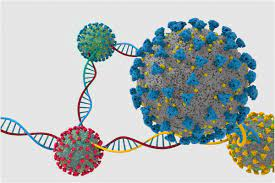Analysis of SARS-CoV-2 genomes samples from Peru
Análisis de genomas de SARS-CoV-2 en muestras de Perú
DOI:
https://doi.org/10.25176/RFMH.v21i3.3712Keywords:
Coronavirus Infections, Genome Viral, Whole Genome Sequencing, Mutation, PeruAbstract
Introduction: Genomic analysis of samples from documented COVID-19 cases can be used successfully to help track sources of Sars-Cov-2 infection, which can be quarantined to prevent the recurrent spread of the disease around the world. Objective: To describe the SARS-CoV-2 sequences isolated from Peruvian patients. Methods: All genomes published up to March 2021, uploaded in the GISAID and Nextstrain repository, were selected. All data is on the web in a public way; In addition, the information was filtered by continent, country, region, clade, lineage, and sex from March 2020 to February 2021. Results: It was evidenced that the region with the most isolated genomes was Lima, the most frequent clade is GR, the viral lineage B.1.1 is the most frequent and persistent in time and most of the genomes were isolated from people of the female sex.Conclusions: The clade GR is common to all South American countries and the European and Asian continents, followed by clades G and GH with greater frequency; on the other hand, the most persistent viral lineage in Peru is B.1.1, this being not common with other countries.
Downloads

Downloads
Published
How to Cite
Issue
Section
License
Copyright (c) 2021 Revista de la Facultad de Medicina Humana

This work is licensed under a Creative Commons Attribution 4.0 International License.



































